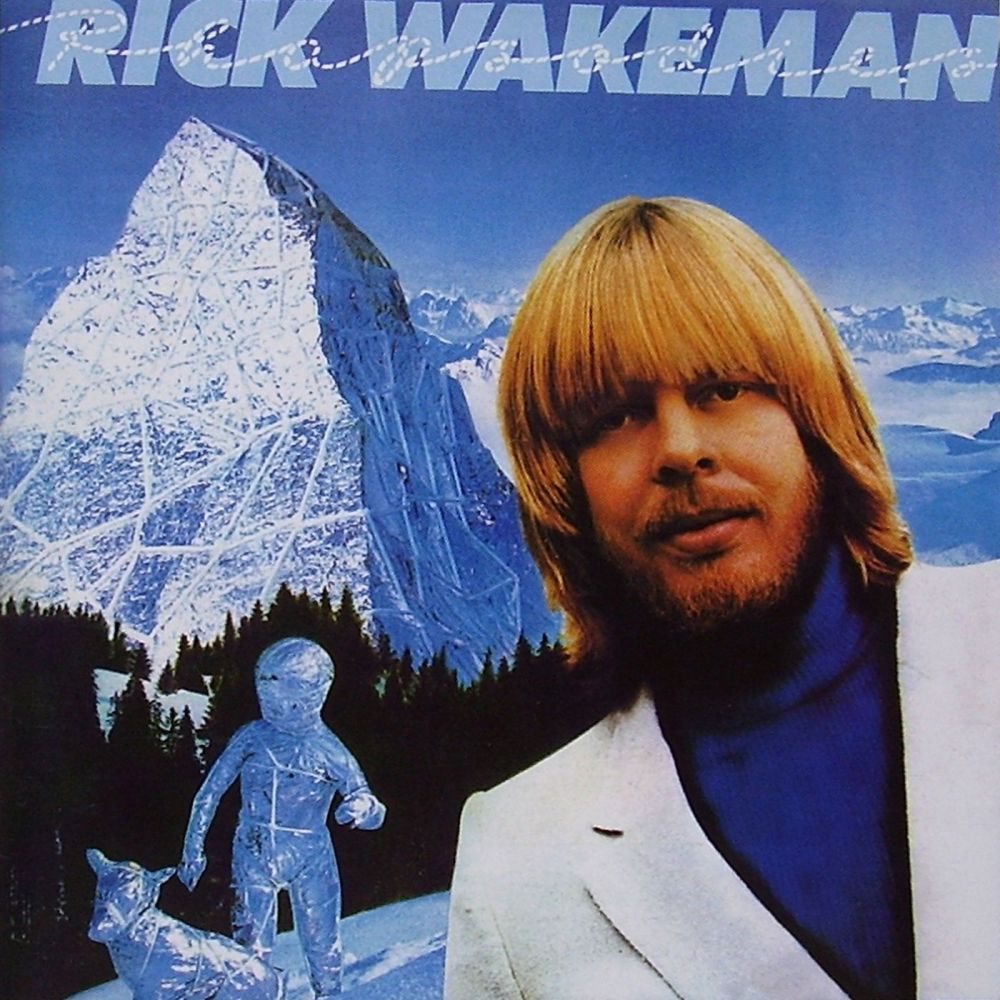| Rick's Perspective |
|---|
| Notes |
| This album is probably the most confusing I have ever made. It contains so many differing styles that it is hard to keep track of what the album is all about. A&M decided I had to have a producer and Toni Visconti was brought on board who I got on great with. A&M demanded everything from disco...(please, I know ) and that's how Rhapsody in Blue came about plus all sorts of other styles some of which I loved and some of which I didn't. Great sounds on tracks like March of the Gladiators though. |
| Wakey's Verdict |
| Worth buying for the fact that half of the album is what I wanted to do and as it's a double album it's still worth it. The last of my recordings for A&M and the end of an era in many ways. |
| Little Known Trivia |
| It was recorded at my studio at my house up a mountain in Switzerland. A mobile studio was driven up to help with extra facilities and studio necessities. Unfortunately the snow came early and the huge mobile truck had to be hoisted by helicopter in order to get it back down the mountain and avoid it being stuck there for four months! |
| Reviews |
|---|
Robert Nancarrow on 12th March 2015 [Other reviews] Whilst this album represents the end of the A&M years, and some people have been rather dismissive, I really like this album. It highlights, even from a relatively young age, Rick's great diversity and his ability to interpret music through a range of styles and genres. I think the fact that he wasn't trying to take himself too seriously was also to his credit. The album gives some sense of what he can deliver through tracks as diverse as Sea Horses, Gladiators and his sublime interpretation of Gershwin’s Summertime. I really enjoyed Credits, the last track, which perfectly captures Rick's essential sense of humour. |
Helge Rumphorst on 14th December 2005 [Other reviews] The "Rhapsodies" Album is the one with the Swiss "Matterhorn" (the one with the triangular shape) in the background of the cover. Inside of the double album there’s another nice panorama picture of the Swiss Alps in a great perspective. This is quite a lot of air... But when we listen to the music, we will find some nice adaptions of classic music as e.g. "Swan Lager". Rick interprets this theme real beautiful, in a way the synth neither exaggerates nor sounds stupid. The other, well known theme on side one is Gershwin’s "Rhapsody in Blue". Here the lead melody, in the original a wooden clarinet, is synthesised with a Mini Moog, it seems as if the blues continues. This adaptation to me is a good example of what a synth can be used for, Wakeman has put a lot of energy in it; a masterpiece in technique. What else can be heard ? Well of course "Summertime" (again Gershwin) is a good opposite to all the cold electronic (and snowy mountains), - it’s getting warmer. This virtuoso Wakeman album has nothing from that massive "Yes" Sound, just a pure, electronic product of the category "rare & vintage"! |
Fernando Lantery on 19th May 2005 [Other reviews] For me, this is one of the best of Rick’s albums. The music changes very much all the time to slow from fast, it’s confusing like Rick said, but it has a lot of different electronic sounds, a lot of good solos and the classic Rhapsody in Blue by Gershwin, that Rick made a fantastic version of. This album I recommend for all people that have heard The Six Wives and The Myths and Legends, it’s a very different type of music, but is very good. |
Phil Boyd on 2nd April 2004 [Other reviews] I love this album. The first song with the vocoder stuff is music to my ears. I've always found it interesting to experiment with the human voice and electronics. |
Tim Boudewijn van der Wart on 30th March 2002 [Other reviews] Although some will argue this, to my opinion this is still a pure seventies album (and not even Rick’s last! to my opinion that’s Rock ‘n Roll prophet!). The style, the instruments and the humour is all typically of the seventies and that makes it a very good album with good and powerful songs (sea horses, summertime, the pulse) and there are also good and funny songs like Bombay duck and woolly willy tango. The album being long does not affect its quality; it is a very good en enjoyable listen with typical Wakeman moments, which we actually all want to hear from Rick. It is a link you don’t want to miss in your collection, there lots of them around too so it won’t be any trouble finding a copy. |
Christian Loebenstein on 23rd August 2000 [Other reviews] Some people say, the cover-art of this record is probably described best as: how low can you get (and they mean the inside of the Gatefold sleeve). Others have asked me, if Wakeman has ever been in Abba. That's "Rhapsodies" judged by the cover. From the inside, the view is quite different: 1979, Mountain Studios Montreux, Tony Visconti producing - what a mixture. The set: 17 tracks, all instrumental; a fantastic rhythm section and a lot of synths; nice melodies and some typically funny solo-ing. Somebody has mentioned an attempt at "easy-listening". Piano-indulgers check out "Summertime". All others I heavily recommend "Bombay Duck" - so am I really the only one to vote this song No.1??? Overall this Album must have been great fun in the making (credits-section)and it is listening to. Track down a vinyl copy, I don't think it will ever be released on CD. |
Scott Allsop on 18th October 1999 [Other reviews] If you want to know where Wakeman came from, this is the album for you. Featuring a large selection of classical (Swan Lager) and jazz (Rhapsody in Blue) influences, "Rhapsodies" plays a successful link between the Wakeman of pre and post Arthur. An important addition to any collection. |
Bjorn Olaf Syvertsen on 4th December 1997 [Other reviews] 1979 was the year when Rick obviously got tired of being serious. It was also a time when punk had taken over the rock scene and progressive rock unfortunately was nearly abolished by critics the world over. It was also a time of disco... That marks Rick's recordings in 1979. "Rhapsodies" is a double album, containing more or less instrumental disco pieces. It does not stand out as a great album, but it contains some really entertaining tracks, especially "Bombay Duck" and "Woolly Willy Tango". |
Tom Brenny on 24th September 1997 [Other reviews] A quirky album, with high spirits. Much of it very disco sounding. Although a lot of the keyboard sounds are tacky and dated, there's some good music. The jazz piano of 'Summertime' is outstanding. Though the rhythm section can't get past the funk and disco sound, still a lot of fun! |
Mats Landstrom on 24th September 1997 [Other reviews] A double album (LP-that is) with a total of 70 minutes of music. Some songs are a little too lightweigth in my taste, and the material is overall "easier" and less serious than on Ricks most albums. I guess if you throw out the worst 30 minutes, you have a good, but not great, single album. The piano rendition of Summertime stands out. |
Armando Betancourt on 19th July 1997 [Other reviews] Rick "Just One More Jig" Wakeman, having fun with his pals at his most festive mood ever. A short double album (70:17) that induces unstoppable foot-stomping, with a few serene moments. Classics such as "Rhapsody In Blue" and "Swan Lager" ("Lake") played to a very danceable beat. Generous use of mini-moog and all the early period synth sounds. Plus a "Summertime" cover guaranteed to raise goose-bumps! |


